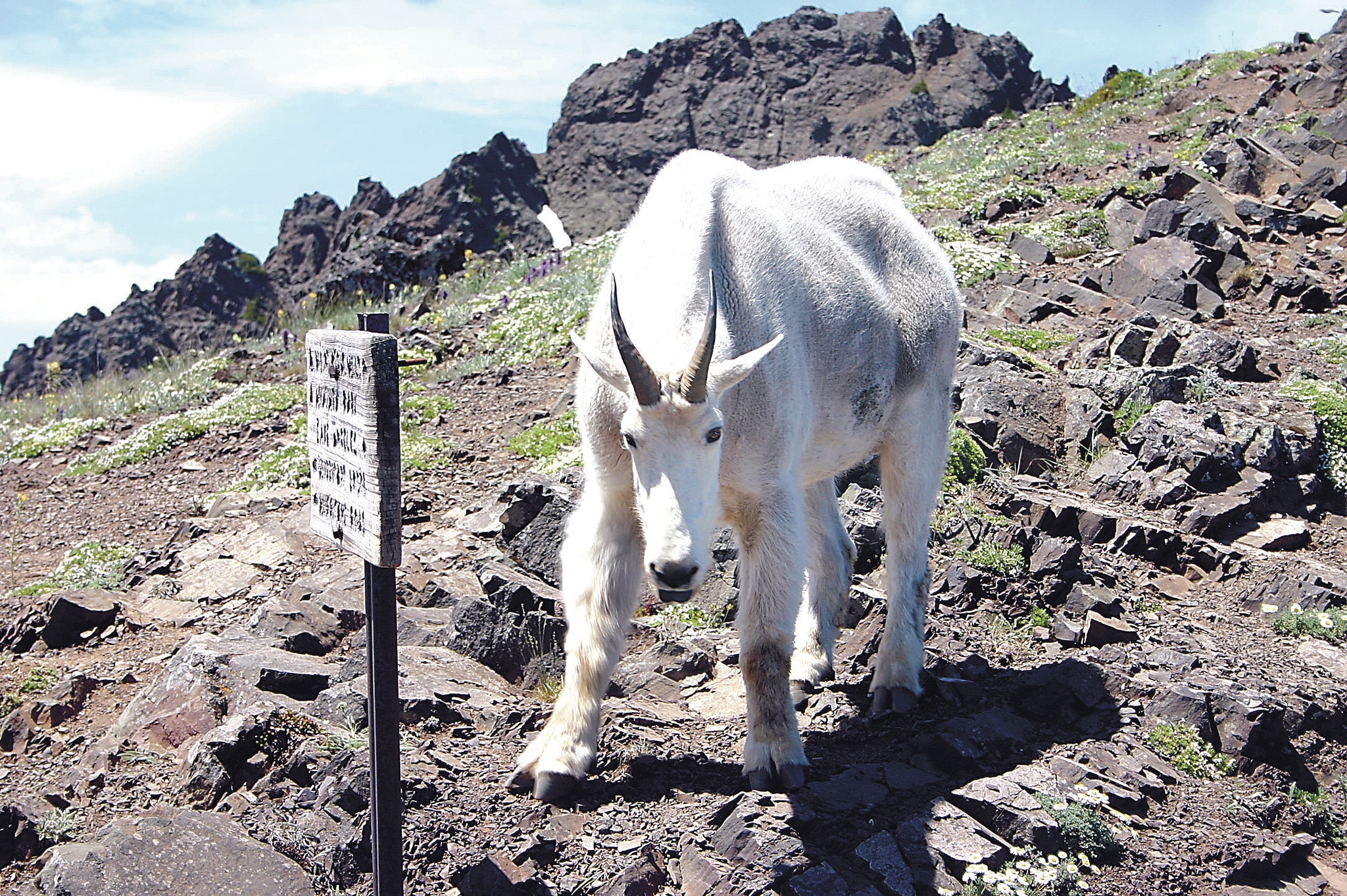MOUNTAIN GOAT NUMBERS in the Olympic Mountains have doubled over the past 12 years according to a U.S. Geological Survey report released Tuesday.
The total number of these non-native mountain goats, introduced to the Olympic Mountains in the 1920s before the creation of Olympic National Park, is estimated to stand at about 620 animals.
“The population has now been growing for over a decade,” said U.S. Geological Survey’s Kurt Jenkins, a collaborator on the effort to monitor mountain goats in the Olympic Mountains for the past 19 years.
“This information will be useful for park managers currently developing a plan for non-native mountain goat management in the Olympic Range.”
Three successive surveys show that the population of non-native mountain goats in the Olympic Mountains increased at an average rate of 8 percent annually from 2004-2016.
The report states that if this rate of population growth were sustained, the population would increase an additional 45 percent over the next five years.
Summertime survey
Over the summer, wildlife biologists from the National Park Service and the state Department of Fish and Wildlife observed mountain goats from a low-flying helicopter, focusing on ice-free areas above 4,500 feet in elevation in Olympic National Park and adjacent areas of Olympic National Forest.
The survey methods were determined from previous studies of GPS-collared mountain goats conducted collaboratively by USGS, NPS and Fish and Wildlife.
These methods account for sampling uncertainty and the possibility that not all mountain goats present are seen during aerial surveys. Therefore, the 2016 survey total of 623 mountain goats is an estimate, with the uncertainty of the estimate ranging from 561 to 741 mountain goats.
Surveys estimated 230 mountain goats in 2004 and 350 in 2011, but differences in areas surveyed during survey years prevent a direct comparison of those estimates to the current estimate.
Instead, researchers adjusted numbers of goats observed in each survey to comparable survey areas to come up with population trends.
Peak population in 1980s
This isn’t the first time the Olympic Mountains have seen an uptick in mountain goat numbers.
Mountain goat populations swelled to just under 1,200 during the early 1980s, creating a untenable situation in drier regions of Olympic National Park.
Those drier areas were showing ill effects from goat grazing, wallowing and trampling.
Changes in floral composition also were noted, such as the absence of lichen and moss cover, which helps to stabilize bare soil surfaces.
Nine species of endemic plants were threatened by the goats, so between 1981-89, Park Service employees removed 509 animals from the goat population via netting and darting operations, many in dangerous, low-altitude helicopter capture missions due to the remote and rugged terrain these animals inhabit.
In 1995, the National Park Service recommend a complete removal of mountain goats from the park, but a plan to shoot the animals drew the ire of animal rights organizations and was never implemented.
Mountain goats rarely attack humans, but there is one fatal and relatively recent precedent in Olympic National Park.
Robert Boardman, 63, of Port Angeles, was fatally gored in October 2010 by a 370-pound mountain goat on a trail near Klahhane Ridge in Olympic National Park. He was trying to protect his wife and a friend when the goat attacked him, severing arteries in his thigh.
To better manage the population, the National Park Service, in cooperation with the U.S. Forest Service and U.S. Fish and Wildlife, is preparing an environmental impact statement for the park’s population of nonnative mountain goats. The National Park Service is evaluating options, including capturing and relocating the goats to the Cascades, increasing hazing activities, lethally removing them, doing nothing, or a combination
More information about this planning process is available online at tinyurl.com/PDN-GoatPlan16.
It’s too bad that an organized cull of the animals couldn’t be organized. But mountain goats, which as an ungulate are more closely related to antelope than goats, are not a sought-after source of game.
Capture-and-removal of the mountain goats is the likely path, but whether or not park managers attempt to completely remove the animals has yet to be determined.
________
Sports reporter/columnist Michael Carman can be contacted at 360-417-3525 or mcarman@peninsuladailynews.com.

